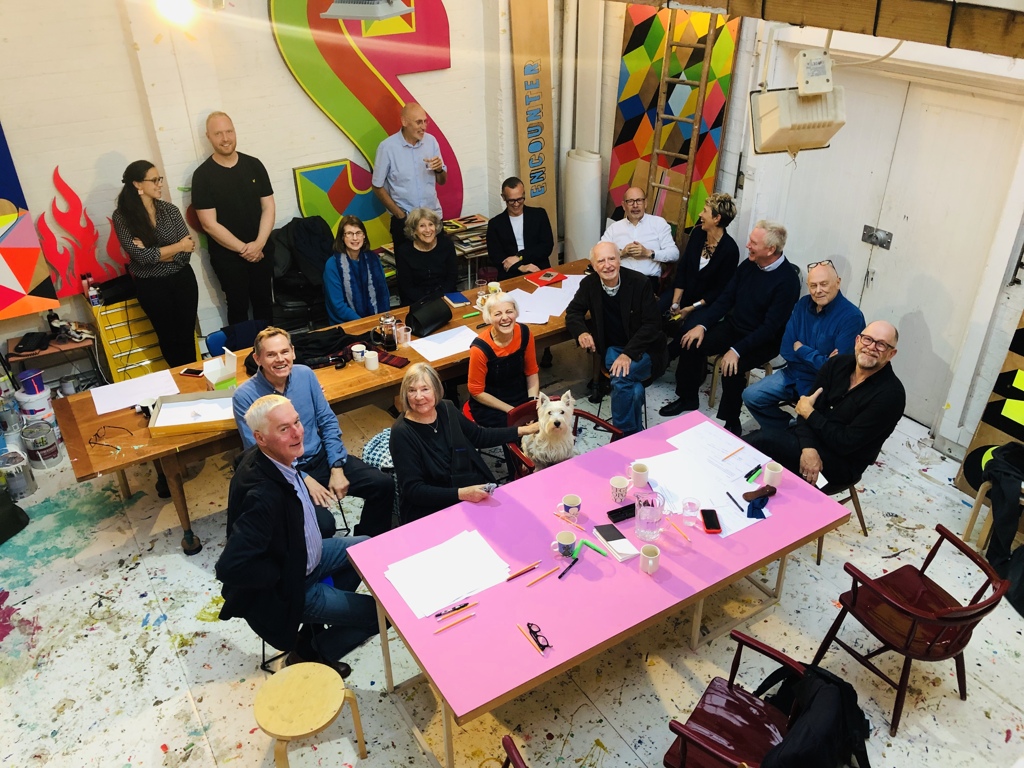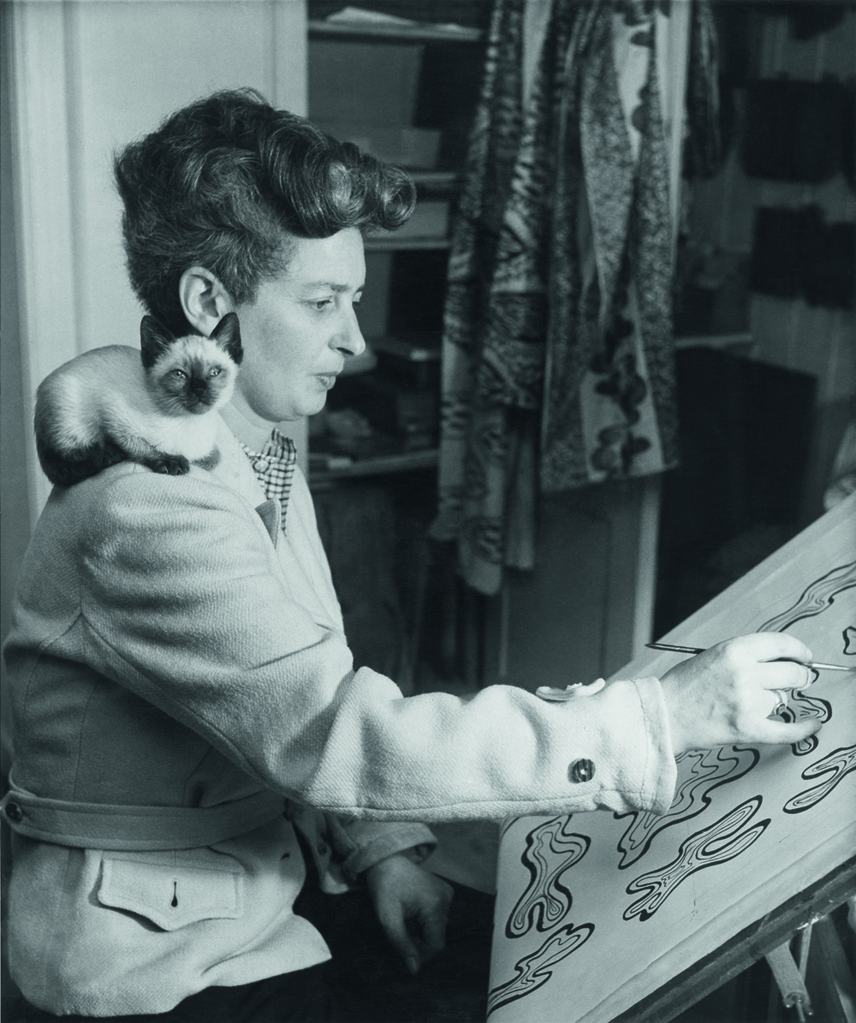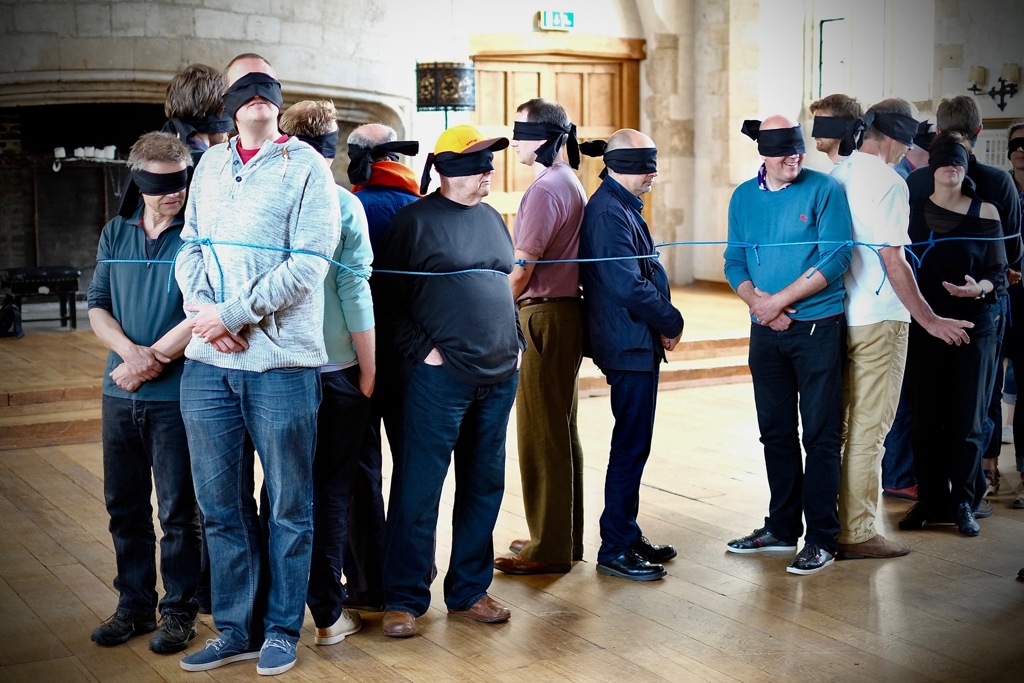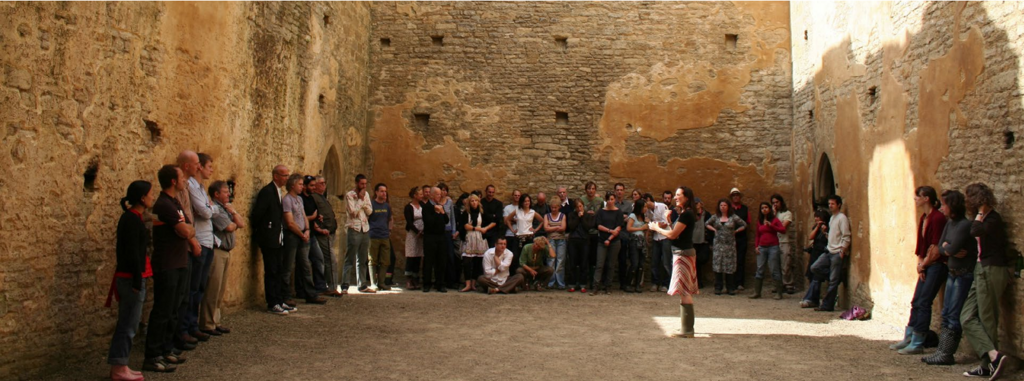Activities have always brought the RDIs together to share experiences. But since Sir Gordon Russell’s day, various groups have emerged from within the ranks that have used the title and RDI’s talents to promote and foster design and craft. National events have fostered collaboration too.
The Second World War saw design come to the fore in ventures to save lives, with RDIs featuring prominently. An airborne lifeboat by small boat designer Uffa Fox, public information posters by Abram Games and Tom Eckersley, urging people to ‘Dig for Victory’ and reminding them that ‘Careless Talk Costs Lives’, and camouflage by Robert Goodden were among these.
In 1942 a shortage of traditional materials prompted the Board of Trade to set up the Design Panel for Utility. Sir Gordon Russell chaired the furniture panel until Frank Austin took over in 1943, Enid Marx created industrial fabrics and Sir Hardy Amies oversaw fashion.
Immediately Post War, the Board of Trade rallied prominent RDIs and some who later joined the faculty for a series of exhibitions to promote British design and boost overseas exports. In 1946 it staged ‘Britain Can Make It’ at the Victoria & Albert Museum in London, with Sir Misha Black and James Gardner taking a lead and poster designed by Ashley Havinden. In 1947 the Royal Scottish Museum in Edinburgh hosted Enterprise Scotland, designed by James Gardner and architect Sir Basil Spence.
But the big push came in 1951 with the Festival of Britain, masterminded by Sir Hugh Casson, who was appointed Director of Architecture for the festival in 1948. Architect and industrial designer Sir Misha Black, who worked on the Dome of Discovery, the Regatta restaurant and the Bailey Bridge, was among the RDIs who played prominent roles in the project on London’s South Bank. Ernest Race’s Springbok and Antelope chairs were on show, for example. Robin andLucienne Day created seating and fabrics respectively, Robert Goodden designed the Lion and the Unicorn pavilion to celebrate British design with exhibits such as Susie Cooper’s bone china Quail service, and Abram Games designed the iconic festival logo. The festival highlighted British creative talent, but it also inspired new generations of designers and architects, some of whom were taken as children by their parents.




